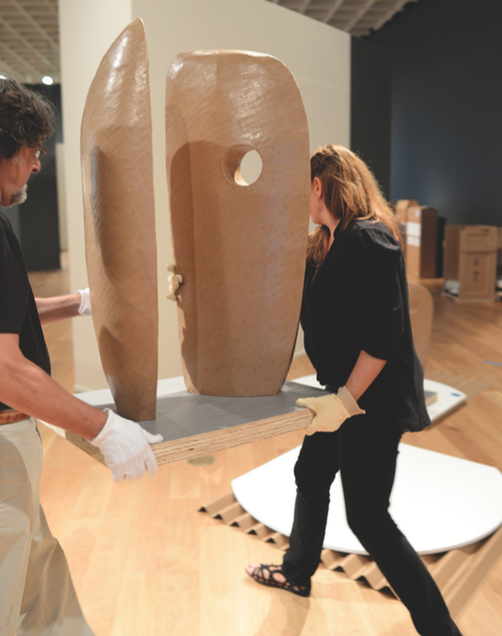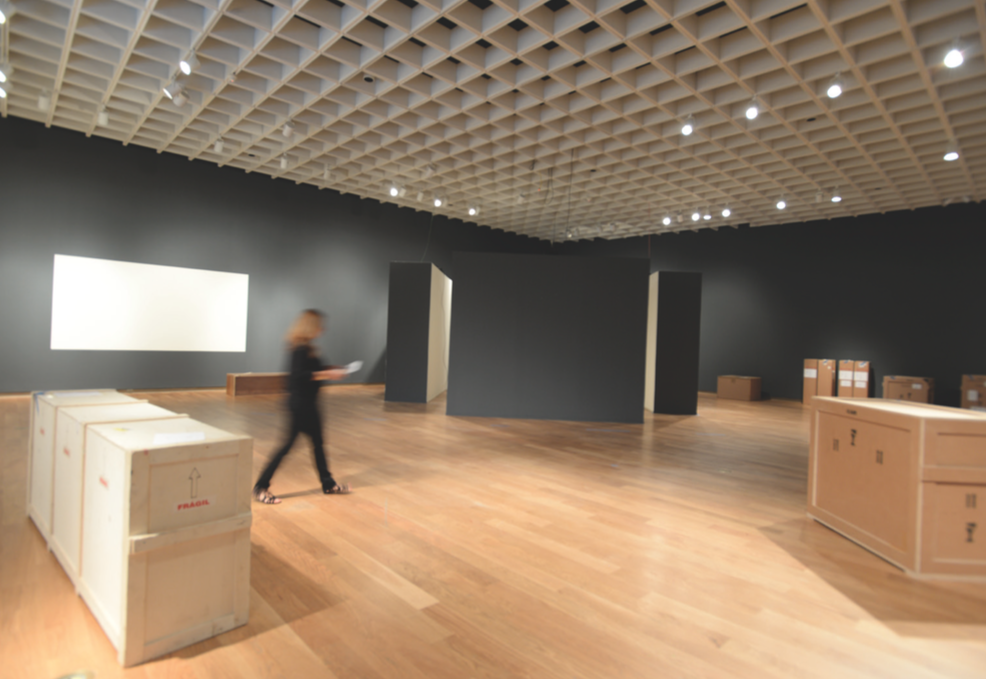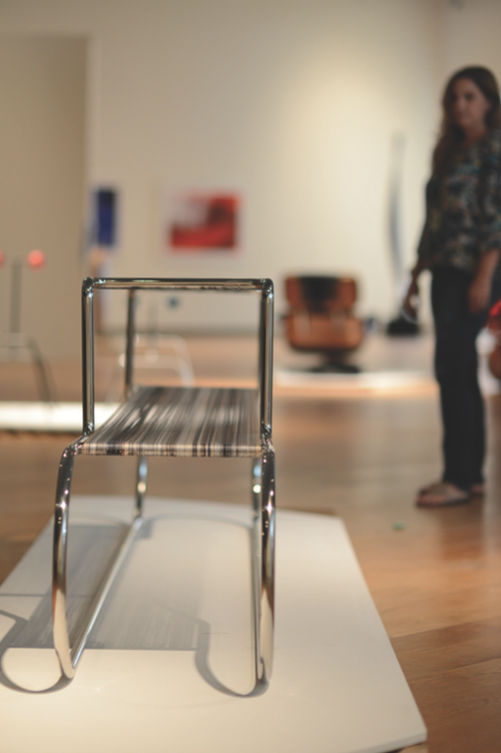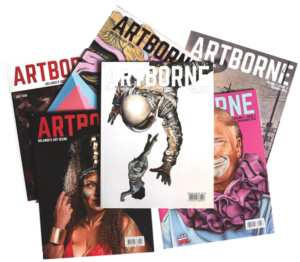Back in 2009, Alex Williams ran a piece in The New York Times titled “On the Tip of Creative Tongues,” about the overuse of the word “curate.” No doubt, since then, it has not slowed in the slightest. Pinterest boards are curated, Usher curated a fireworks display, moms casually mention curating their coffee table displays in social settings. As a legit curator, trained through the traditional art history academic route, holding positions in museums, and now as a partner in an independent curatorial firm, where does this leave me?

Reviewing the exhibition catalog for information about Kourmoundourous’ installation
Every May, I look forward to the annual conference for the Association of Art Museum Curators, for the unique opportunity to talk shop with my people. There are sub-groups for contemporary curators, independent curators, and almost every other historical period or style. It would seem that curators working outside of the realm of contemporary art are not as impacted by the mainstreaming of the idea of curation. They are specialists in a particular time, place, or movement and held in a sort of expert status within that area.

Ginger and Rick Birkbeck installing Terence Gower’s piece. Photo by Annie Vanacore
Contemporary curators, on the other hand, are tasked with responding to the art of our time, at this very moment, and we are not alone. Countless design and fashion magazines, concept boutiques and bloggers are also sifting through the cultural output on a daily basis, offering commentary and selection, not at all unlike my job. Or, as is the case with this very publication, artists reach around the establishment and self-publish in order to have their voice, and the voices of fellow artists, be part of the conversation.
It is fantastic and refreshing to work and live at a time when there is such intense interest in art and design. Gone is the elitist commentary in traditional print to dictate what is good and what is “art.” Instead, our process is far more democratic and multivalent, offering concurrent trends and styles as opposed to one overarching Style. The pace with which artists and designers are recognized and exalted is unprecedented as well. Social media has overcorrected the playing field so that a mention from a blogger can have more impact on the career of a designer or artist then a mention in Vogue, Dwell, or ArtForum, not to mention the volume of material it is possible to cover in a daily blog.
My first curatorial post was in 1999 with the Museum of Art Fort Lauderdale. While much remains the same since that first job as Curator of the Projects Gallery—an experimental contemporary space—so much has changed as well. Most obviously, the expanded breadth of the internet and the impact that it has had on easy communication between artists and galleries, is huge. Even more impactful, however, has been this open-sourcing of a curatorial voice. When a 13-year-old with a smart phone and no formal beauty school training can be the newest sensation in makeup application on YouTube, make x-amount of millions and rack up x-amount of followers, the value of populism is obvious. Translated into the world of contemporary art, what makes my “eye” more relevant than someone else’s without the art history background and museum experience?

Overview shot of the first day of the installation. Photo by Annie Vanacore
Before “curator” was a household name, I was in the habit of needing to explain my career choice to people as such: “I travel as much as possible, see as much art and design as possible, and look for trends or themes that reflect our society or our culture at this particular time.” Art has always been a direct reflection of the world, and that remains the same. The added dimension has now become prismatic, so to speak. For example, if I attend a gallery opening for an artist, along with two other people—one art/design magazine critic, and one blogger—there will be three distinct reflections of the very same work. While all interpretations will eventually filter down to everyone, either through a museum exhibition of that artist’s work, or an article in print, one could argue that the immediacy of the blogger’s post and subsequent social media footprint will have a profound impact. Perhaps that impact is reflected in the attendance to the gallery show, sales of the work, and/or notoriety of the artist, but in a society that values the new and the now, they clearly have the advantage. Museum exhibitions are cumbersome, expensive and time-consuming to organize. Work that I saw at the Venice Biennale in 2013 is only now being included in an exhibition, three years later. It is extremely hard to stay current with that type of lead time.

reviewing the finished installation of Fernanda Fragatiero. Photo by Annie Vanacore
Another phenomenon contemporary curators deal with in contemporary art is the celebrity-worthy notoriety given to certain buzzworthy projects. A major piece, like Christian Marclay’s The Clock from 2010, received such major attention via social media outlets and blogs (including its very own Twitter handle @TheClockatMoMA) that all five editions and two artists proofs were immediately snatched up by institutions and collectors, making it virtually impossible to include in exhibitions, where it could be placed in a new and interesting context, as opposed to a singular approach.
And that, more than anything, seems to be what separates the contemporary curator from the cultural commentator. Everyone is welcome to look, make value judgements, and report those to their audience, but the added level of complexity that includes placing the work within an historical, cultural, social context is the purview of the curator in the traditional sense of the word. Each and every layer of comprehension of any work of art has a place, and arguably a very important role, but that is exactly what makes today’s loose use of curation such a rich and complex arena in which to see and experience our world through the eyes of the artist.
—Ginger Gregg Duggan, curatorsquared
